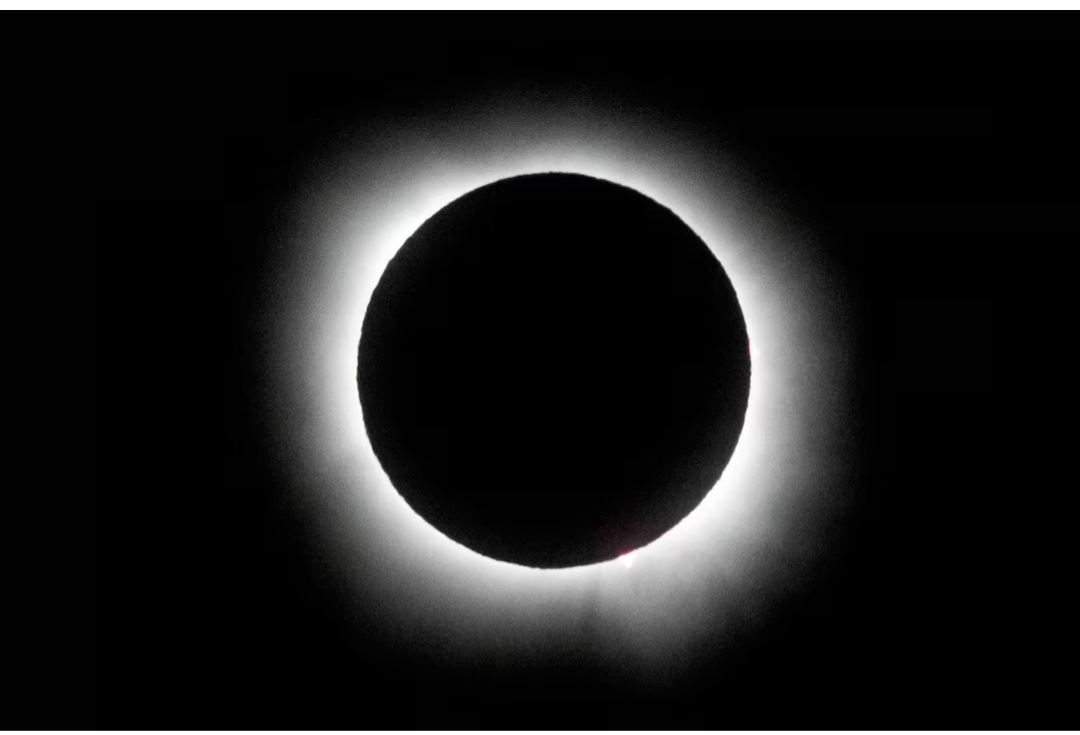Total solar eclipse blackened sun in the midday dusk on Monday, darken the North America continent in seven years.

The Eagle News Service:
Total solar eclipse blackened sun in the midday dusk on Monday, which darken the North America continent in seven years.
Skywatchers across North America gazed upward at a blackened sun in the sky on Monday, celebrating with cheers, music and matrimony the first total solar eclipse to darken the continent in seven years.
From a Mexican beach resort close to where the eclipse made landfall to the banks of the Ohio River and farther north beyond the roaring cascades of Niagara Falls at the U.S.-Canadian border, spellbound crowds reacted to the sight of “totality” with jaw-dropping expressions of awe and joy.
In Russellville, Arkansas, a town of roughly 30,000 residents near the state’s only nuclear power plant, almost 400 couples tied the knot by the shadow of the moon in a mass wedding event dubbed “Elope and the Eclipse.”
The dreary weather subdued the experience until clouds momentarily parted to reveal the last 30 seconds of totality, and the crowd went wild, cheering and shouting, “It’s so beautiful.”
As the skies began to brighten again, a band played out the retreating lunar shadow with a rendition the R.E.M.’s 1992 hit song “Man on the Moon.
It was first total eclipse to sweep across a large swath of North America since 2017, and will be the last one visible from the contiguous United States until 2044.
As totality unfolded at a campground in North Hudson in upstate New York, hundreds of people shrieked with excitement.
Thousands in solar-safe eyewear perched in deck chairs along the coastal promenade, and an orchestra played the “Star Wars” movie theme as skies darkened under the approaching lunar shadow. The crowds burst into cheers, applause and whistles when the eclipse reached totality.
The period of totality, lasting up to 4-1/2 minutes depending the observer’s location, was ushered in by a number of other eerie eclipse effects. Some stars twinkled at midday as dusk abruptly descended, sending temperatures dipping and faint waves of “shadow bands” flickering over the landscape. Birds and other wildlife sometimes fall silent and still.
Eclipse fans traveled from far and wide hoping to glimpse the phenomenon somewhere along the “path of totality” stretching 2,500 miles (4,000 km) from Mexico’s Pacific Coast through Texas and across 14 other U.S. states into Canada. The moon’s shadow exited continental North America in Newfoundland.
A partial eclipse, in which the moon obscures only a portion of the sun, was visible across most of the continental United States outside the path of totality, where weather permitted.




